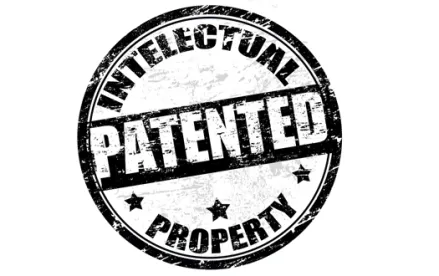PART 4: INTELLECTUAL PROPERTY LEGISLATION TO WATCH IN 2020
In this four-part series, we take a look forward at the cases, legislation, and other trends that are likely to have a significant impact on intellectual property law and practice in 2020. In the first three parts of the series, we looked at the IP issues currently pending before the Supreme Court, possible changes to the law of patent eligibility, and hot topics surrounding inter partes review proceedings. In this last part of our series, we look at proposed legislation related to intellectual property issues. In particular, we consider:
-
The “Inventor Rights Act,” which would establish protections for “inventor-owned patents,” including a prohibition on USPTO reexamination of such patents without the patentee’s consent;
-
The Copyright Alternative in Small-Claims Enforcement (“CASE”) Act of 2019, which would establish a small claims tribunal within the Copyright Office to address copyright disputes involving less than $30,000 in damages;
-
The Counterfeit Goods Seizure Act of 2019, which would authorize the U.S. Customs and Border Protection Agency to seize counterfeit articles that infringe a design patent; and
-
The Trademark Modernization (“TM”) Act of 2020, which would establish new ex parte procedures in the USPTO to expunge trademarks obtained based on false claims that the marks were used in commerce.
-
The “Inventor Rights Act” (H.R. 5478, introduced December 18, 2019)
The Inventor Rights Act—introduced by Congressmen Danny Davis (D-IL) and Paul Gosar (R-AZ)—seeks to “restore patent rights to inventors” by establishing several protections for “inventor-owned patents.” An “inventor-owned patent” is defined as a patent to which the inventor, or an entity controlled by the inventor, is the owner of the patent and holds all substantial rights in the patent.
For such “inventor-owned patents,” the bill would create a number of protections, including:
-
A prohibition on the USPTO from reexamining, reviewing, or otherwise making a determination about the validity of the patent without the consent of the patentee;
-
An amendment to broaden the patent venue statute and thereby allow lawsuits in judicial districts where the inventor conducted research or where any party to the lawsuit (including the patent owner) maintains a “regular and established place of business” that engages in R&D or manufacturing related to the patent-in-suit;
-
Establishing a presumption that an injunction will issue upon a finding of infringement of an inventor-owned patent; and
-
Allowing a patentee to seek disgorgement of profits resulting from the infringement, as well as a mandatory award of attorneys’ fees that exceed 10 percent of the disgorged profits.
Key Takeaways
The Inventor Rights Act would effectively create two classes of patent assets. Patents falling into the narrower class of “inventor-owned patents” would be transformed into super-strength assets. An inventor (or an entity “controlled by” the inventor) would have substantially stronger rights than other types of patent owners, including corporations, universities, and large-scale patent licensing companies. As such, the Act may incentivize individual inventors or small (inventor-controlled) businesses to participate in the patent system.
The Act may also spur innovation in the secondary market for patent rights. For example, rather than simply purchasing inventor-owned patents, investors could seek to structure deals to ensure inventors continue to hold “all substantial rights” to their patents and can therefore take advantage of the Act’s protections.
The law may also have a number of unintended consequences. For example, the Act may unintentionally transform inventor-controlled patent assertion entities into a new breed of super “trolls.” For instance, Leigh M. Rothschild and the dozens of patent assertion entities he controls would presumably benefit dramatically from the Inventor Rights Act because Rothschild is the named inventor on a number of the patents that his entities assert. In the meantime, universities and large corporations—entities that invest billions of dollars in R&D—would be left with patents that are suddenly second-class assets. Moreover, operating companies accused of infringing inventor-owned patents would face the threat of an injunction, even in cases where the inventor is not manufacturing any patent-practicing product. Under these circumstances, it is fair to wonder whether the proposed legislation would do more harm than good.
-
The Copyright Alternative in Small-Claims Enforcement (CASE) Act of 2019 (H.R. 2426, S. 1273, introduced May 1, 2019)
The CASE Act was introduced in both chambers of Congress on May 1, 2019. It carries bipartisan sponsorship with 153 representatives for the House bill and 19 Senators for the Senate version. It passed the House on October 22, 2019 with overwhelming support (410 Yeas, 6 Nays, 15 Not Voting) and is currently pending in the Senate.
If passed, the CASE Act would establish an alternative forum to federal courts for copyright disputes involving less than $30,000 in damages. This new forum, called the “Copyright Claims Board” (“CCB”), would be created within the Copyright Office. The Board would consist of three full-time officers recommended by the Register of Copyrights and appointed by the Librarian of Congress.
The CCB would be empowered to hear claims of infringement, claims seeking a declaration of noninfringement, and claims of misrepresentation in connection with assertions of infringement. Importantly, proceedings before the CCB would be “voluntary” and a respondent has the ability to “opt out” of the proceeding within 60 days of service. If the respondent “opts out,” the claim would be dismissed without prejudice.
Once CCB proceedings are commenced, parallel district court proceedings must be stayed. A party can seek district court review of a final determination from the CCB within 90 days of the determination. The grounds for review, however, are limited by statute. For example, a party could seek review alleging that the CCB determination was the result of fraud or corruption, but a party could not argue merely that the CCB was wrong on the merits. A party could also seek district court assistance in enforcing a final determination from the CCB if the losing party fails to comply with the determination. Fees incurred in such enforcement proceedings would be shifted to the non-compliant party.
Key Takeaway
A significant amount of copyright infringement goes unaddressed because the cost of district court litigation is too high. The Copyright Claims Board may provide a mechanism for copyright owners to pursue lower-value claims that are not otherwise economically viable to litigate. In the digital age, where infringement often runs rampant, having this new forum as option may better assist small to medium-sized authors in protecting their works. At the same time, there are reasons to be circumspect about the practical significance of the CCB. Given that accused infringers can simply “opt out” and trigger dismissal of CCB proceedings, copyright owners may routinely face a familiar choice—either incur the costs to litigate in federal court or forego enforcement proceedings.
- The Counterfeit Goods Seizure Act of 2019 (S. 2987, introduced December 5, 2019)
The Counterfeit Goods Seizure Act was introduced in the Senate on December 5, 2019 with bipartisan sponsorship. The bill is quite simple: it authorizes the U.S. Customs and Border Protection Agency (“CBPA”) to seize imported merchandise that infringes a design patent. Of course, the CBPA already has the authority to automatically seize counterfeit merchandise involving other IP rights, such as copyrights and trademarks.
Key Takeaway
Allowing the CBPA to readily seize articles infringing design patents—without the need for an exclusion order from the U.S. International Trade Commission—allows the CBPA to respond more quickly, effectively, and cost-efficiently to design patent infringement. Design patent holders would not necessarily need to go through the long and costly process of obtaining an exclusion order through the ITC. At the same time, there is a significant issue of whether the CBPA is prepared to make decisions on whether a product infringes a design patent. Nonetheless, this legislation may help prevent a common counterfeiter scheme designed to skirt current CBPA seizure protocols—where counterfeiters wait until after importation to affix infringing marks to counterfeit items. So long as these articles are also covered by a design patent, then the Counterfeit Goods Seizure Act would give the CBPA the ability to seize the items without the need for an exclusion order.
- The Trademark Modernization (TM) Act of 2020 (H.R. 6196, S. 3449, introduced March 11, 2020)
The TM Act was introduced in both the House and Senate with bipartisan support on March 11, 2020. The TM Act seeks to address false claims of commercial use made during the trademark registration process. More specifically, the TM Act would amend the Lanham Act to:
-
Allow third parties to submit evidence during the trademark registration process;
-
Give the USPTO flexibility to set response periods to office actions from anything between 2 and 6 months, with applicants having the option to extend to the full 6 months;
-
Create ex parte procedures to reexamine a trademark on the basis that the mark has never been used in commerce in connection with registered goods or services; and
-
Create a presumption that that a trademark owner suffers irreparable harm from infringement and, as such, is entitled to an injunction upon a finding of infringement.
Key Takeaway
The USPTO and brand owners have raised substantial concerns on Capitol Hill about the flood of false or misleading trademark registrations. Brand owners, in particular, have complained that it is expensive and time-consuming to clear invalid marks from the Trademark Register in cases where brand owners wish to register similar marks. Sponsors of the TM Act have also alleged that there has been a flood of fraudulent registrations from China that relied on doctored photos of products to falsely show use of a trademark in commerce.
The new ex parte procedures under the TM Act would promote timely and low-cost removal of invalid marks from the register. The Act would also make it easier for trademark owners to enjoin infringing activity by restoring a presumption of irreparable harm.




 />i
/>i


